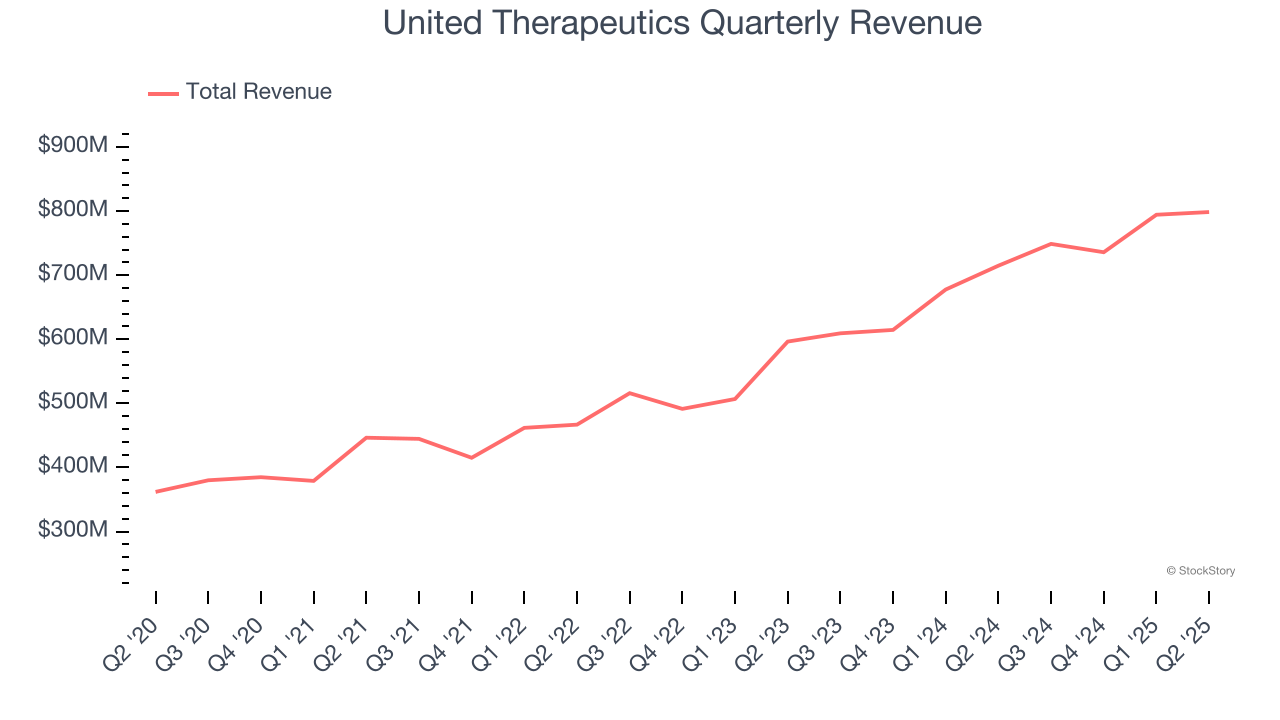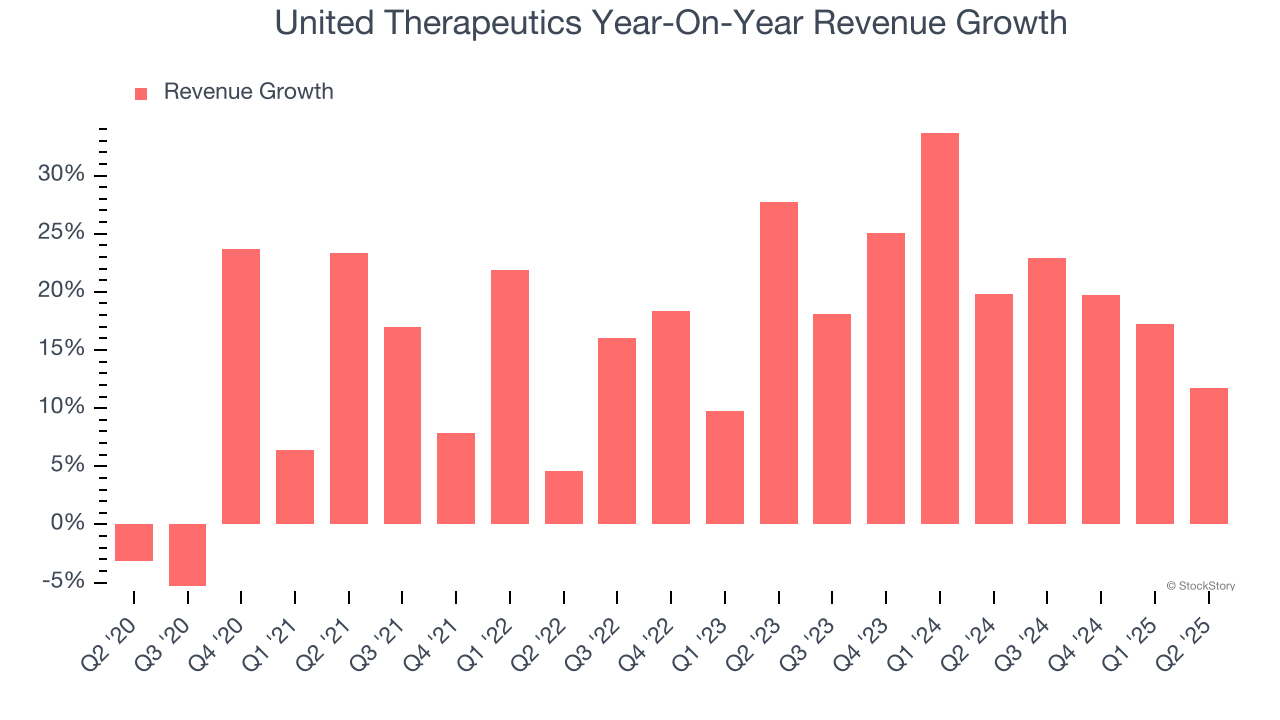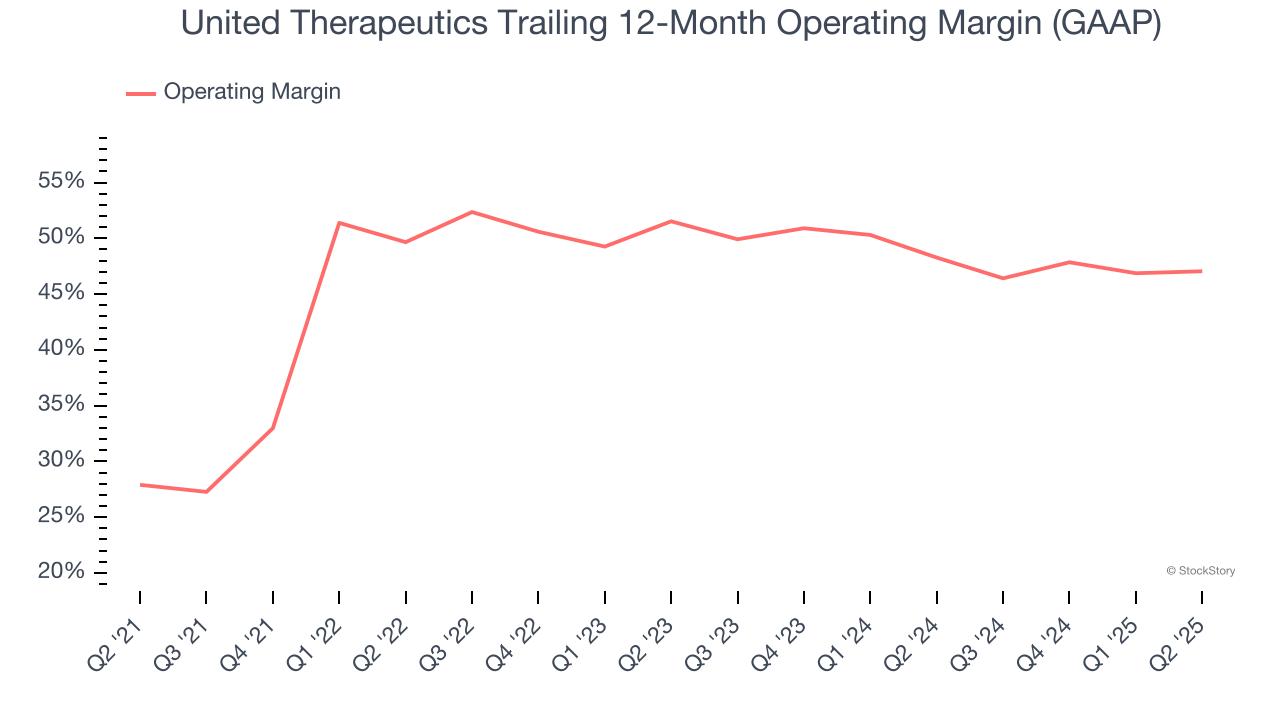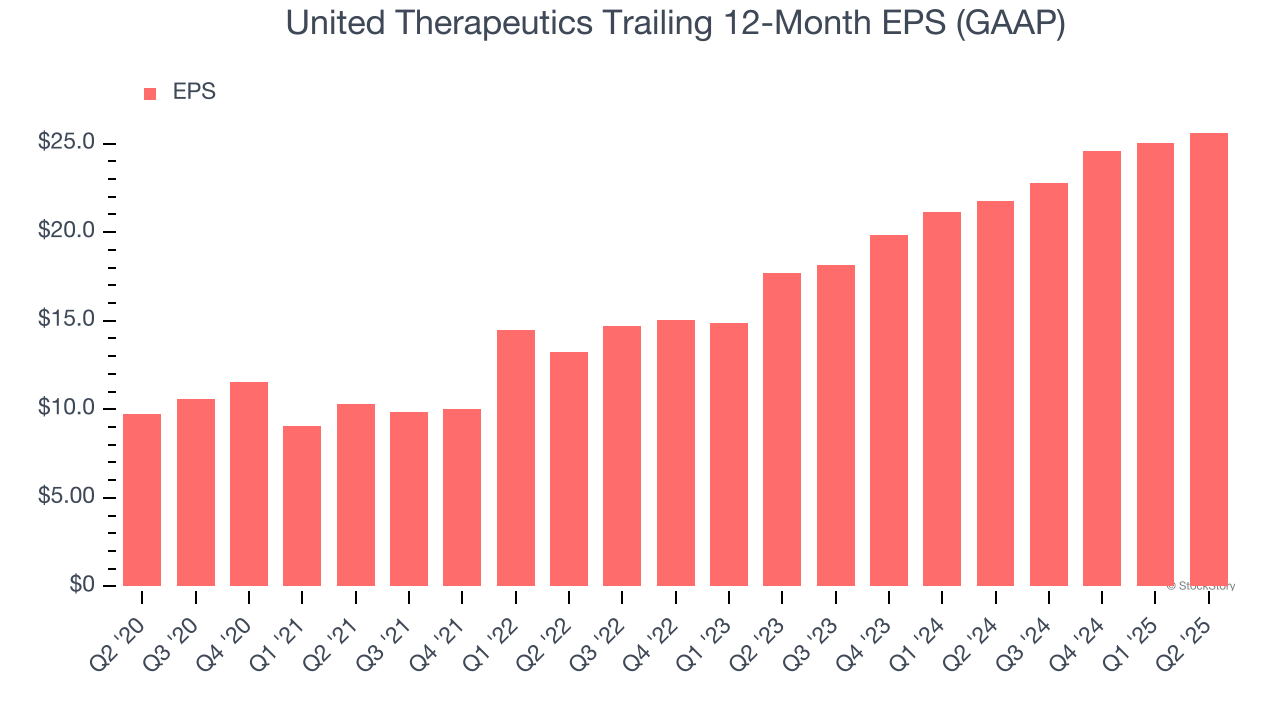|
|
|

|
|||||

|
|

Biotechnology company United Therapeutics (NASDAQ:UTHR) missed Wall Street’s revenue expectations in Q2 CY2025, but sales rose 11.7% year on year to $798.6 million. Its GAAP profit of $6.41 per share was 6.9% below analysts’ consensus estimates.
Is now the time to buy United Therapeutics? Find out by accessing our full research report, it’s free.
“Our second quarter yet again produced record-setting results driven by the strength of our foundational commercial business,” said Martine Rothblatt, Ph.D., Chairperson and Chief Executive Officer of United Therapeutics.
Founded by a mother seeking treatment for her daughter's pulmonary arterial hypertension, United Therapeutics (NASDAQ:UTHR) develops and commercializes medications for chronic lung diseases and other life-threatening conditions, with a focus on pulmonary hypertension treatments.
A company’s long-term sales performance can indicate its overall quality. Any business can put up a good quarter or two, but many enduring ones grow for years. Thankfully, United Therapeutics’s 16.6% annualized revenue growth over the last five years was impressive. Its growth surpassed the average healthcare company and shows its offerings resonate with customers, a great starting point for our analysis.

We at StockStory place the most emphasis on long-term growth, but within healthcare, a half-decade historical view may miss recent innovations or disruptive industry trends. United Therapeutics’s annualized revenue growth of 20.7% over the last two years is above its five-year trend, suggesting its demand was strong and recently accelerated.

This quarter, United Therapeutics’s revenue grew by 11.7% year on year to $798.6 million but fell short of Wall Street’s estimates.
Looking ahead, sell-side analysts expect revenue to decline by 9.7% over the next 12 months, a deceleration versus the last two years. This projection is underwhelming and implies its products and services will see some demand headwinds. At least the company is tracking well in other measures of financial health.
Software is eating the world and there is virtually no industry left that has been untouched by it. That drives increasing demand for tools helping software developers do their jobs, whether it be monitoring critical cloud infrastructure, integrating audio and video functionality, or ensuring smooth content streaming. Click here to access a free report on our 3 favorite stocks to play this generational megatrend.
Operating margin is an important measure of profitability as it shows the portion of revenue left after accounting for all core expenses – everything from the cost of goods sold to advertising and wages. It’s also useful for comparing profitability across companies with different levels of debt and tax rates because it excludes interest and taxes.
United Therapeutics has been a well-oiled machine over the last five years. It demonstrated elite profitability for a healthcare business, boasting an average operating margin of 45.9%.
Analyzing the trend in its profitability, United Therapeutics’s operating margin rose by 19.1 percentage points over the last five years, as its sales growth gave it immense operating leverage. Zooming into its more recent performance, however, we can see the company’s margin has decreased by 4.5 percentage points on a two-year basis. Given its business quality, we’re optimistic that United Therapeutics can correct course and return to expansion.

This quarter, United Therapeutics generated an operating margin profit margin of 45.6%, in line with the same quarter last year. This indicates the company’s overall cost structure has been relatively stable.
Revenue trends explain a company’s historical growth, but the long-term change in earnings per share (EPS) points to the profitability of that growth – for example, a company could inflate its sales through excessive spending on advertising and promotions.
United Therapeutics’s EPS grew at an astounding 21.3% compounded annual growth rate over the last five years, higher than its 16.6% annualized revenue growth. This tells us the company became more profitable on a per-share basis as it expanded.

Diving into the nuances of United Therapeutics’s earnings can give us a better understanding of its performance. As we mentioned earlier, United Therapeutics’s operating margin was flat this quarter but expanded by 19.1 percentage points over the last five years. This was the most relevant factor (aside from the revenue impact) behind its higher earnings; interest expenses and taxes can also affect EPS but don’t tell us as much about a company’s fundamentals.
In Q2, United Therapeutics reported EPS at $6.41, up from $5.85 in the same quarter last year. Despite growing year on year, this print missed analysts’ estimates, but we care more about long-term EPS growth than short-term movements. Over the next 12 months, Wall Street expects United Therapeutics’s full-year EPS of $25.62 to grow 7.8%.
We struggled to find many positives in these results. Its EPS missed and its revenue fell slightly short of Wall Street’s estimates. Overall, this was a softer quarter. The stock remained flat at $294.99 immediately following the results.
United Therapeutics underperformed this quarter, but does that create an opportunity to invest right now? When making that decision, it’s important to consider its valuation, business qualities, as well as what has happened in the latest quarter. We cover that in our actionable full research report which you can read here, it’s free.
| Jan-05 | |
| Dec-31 | |
| Dec-30 | |
| Dec-15 | |
| Dec-11 | |
| Dec-10 | |
| Dec-10 | |
| Dec-09 |
This Gold Stock Hits A High, With Miner Poised For Huge Swing To Profit
UTHR
Investor's Business Daily
|
| Dec-09 | |
| Dec-05 | |
| Dec-04 | |
| Dec-04 | |
| Dec-03 | |
| Nov-21 |
United Therapeutics Stock, Up 72% Since August, Nears Buy Point Of Rare Base
UTHR
Investor's Business Daily
|
| Nov-21 |
Join thousands of traders who make more informed decisions with our premium features. Real-time quotes, advanced visualizations, backtesting, and much more.
Learn more about FINVIZ*Elite